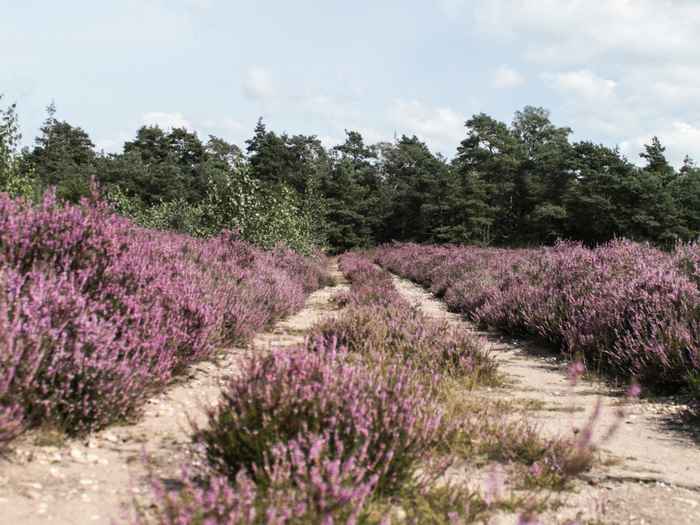Heathland management can improve soil carbon sequestration under drought
25 April 2024

'Drought can cause loss of carbon,' says Mariana Gliesch. 'It is important to find out exactly how heathland ecosystems respond to that.'
'But in doing so, we often only look at the effects aboveground, whereas the soil may give us much better clues about the functioning of the entire ecosystem,' says Franciska de Vries, 'Drought affects the growth of certain plants that draw carbon from the air aboveground, but it also affects the behaviour of bacteria and fungi underground that process and store carbon in the soil.'
20 years
To find out what drought does to the ability to store carbon, Gliesch and De Vries sampled a long-term experiment that has been running for 20 years. For the study, shelters were placed over the heather to simulate drought. ‘Long-term experiments are necessary because changes in soil carbon happen very slowly, and differences can be very small,' says De Vries. 'But those small differences can add up to have a big impact because very large areas of soil are involved.'
Bacteria and fungi
'We see that drought permanently alters the soil and the bacteria and fungi, and with that also the ability to store carbon changes,' says Gliesch. 'In addition, we see that the impact of drought depends on how the heathland is managed and which plant species grow there.'
Mowing more often
De Vries: 'We see, for example, that the soil under grasses like purple moor grass (Molinia caerulea), loses more carbon than the soil under heather plants.' In addition, the researchers noticed that the way the heathland is managed and mowed also has an impact on the soil. 'The soil under heather plants that are mowed more often does not lose carbon, while the soil under older heather plants, which are not mowed, do.'
Adapted heathland management targeted at maintaining vital heather plants, can therefore help with soil carbon uptake. Gliesch: 'That is a first step in the right direction. But it is especially important to understand how drought changes the soil, especially now that we are facing more severe and frequent droughts.'